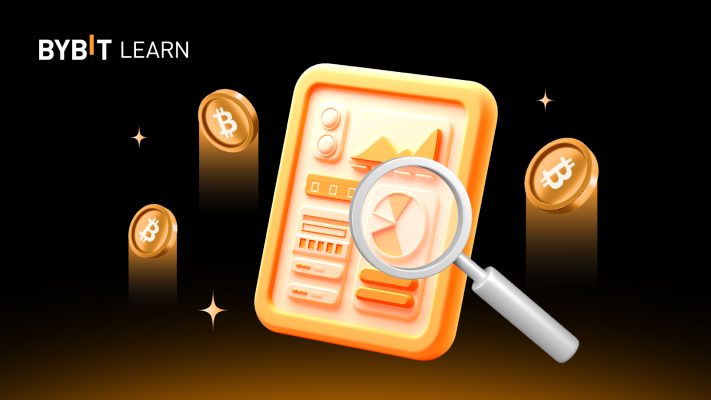Table of contents
Ripple and XRP made a name in cryptocurrency in the last few years.
They promised a highly usable cryptocurrency for international business payments, and the idea overjoyed the public. And this can be seen in the fact that XRP managed to keep a top position by Market Cap for a long time.
But lately, the situation has turned around as the Ripple Lawsuit seems to overshadow XRP’s purpose.
Since the U.S. Security and Exchange Commission (SEC) charged Ripple and two executives with conducting a $1.3 billion unregistered securities offering on December 22, 2020, XRP’s growth seems to have halted.
Due to this, Ripple’s trust wavered to the point some crypto exchanges stopped XRP trading.
The situation seemed dire. However, Ripple and XRP did not plan on going gently into that good night, and considering the latest XRP Lawsuit news, even less so.
But before discussing the SEC vs. Ripple XRP lawsuit, let’s see more details about Ripple.
What is XRP, and what is Ripple?
First things first, XRP is not interchangeable with Ripple.
XRP is a digital currency issued and partially controlled by Ripple Inc. The currency runs on a digital payment platform called RippleNet, built on a distributed database called XRP Leger.
It is essential to mention that while RippleNet is owned and run by the Ripple company, the XRP Ledger is an open-source protocol that isn’t really based on blockchain. It is a Distributed Ledger Technology in its own right.
Companies that want to access the Ripple network can use gateways that act as entry points to Ripple for people outside the network.
Ripple is a for-profit entity that offers companies and businesses an alternative to the banking system in the form of a fast payment and financial settlement system called RippleNet.
As a for-profit company, Ripple’s target consists of financial institutions, payment providers, and corporations.
The XRP ledger
XRP Ledger is a distributed database, an open-source protocol supporting RippleNet and its solutions.
The XRP Ledger follows the Federated Byzantine Consensus model. The network achieves consensus by having nodes vote on whether a transaction should or should not be included in the ledger. The validator nodes agree on the order and validity of XRP transactions. This agreement, called consensus, serves as a final and irreversible settlement.
It takes 3-5 seconds for the ledger to reach a consensus. Once a transaction is broadcasted, anyone accessing the XRP ledger can view the network’s most recent state.
The network is formed by computers holding the roles of validators. The validators are spread around the world and maintain a shared database of who owns what, just like in the case of Bitcoin.
Trust-Based Validator Nodes
The trust-based validator nodes system receives its name because the validators are always honest. If a validator is caught trying to act sketchy, he will be immediately muted, and the other nodes won’t listen to it anymore.
Anyone can be a validator, and active validators on the ledger today include universities, exchanges, and financial institutions.
There are currently 150+ validators, and Ripple runs 6 of them.
While theoretically, anyone can run a validator node to help maintain and expand the XRP Ledger, Ripple operates a default list of trusted validators.
As mentioned before, the XRP Ledger is inspired by the Federated Byzantine Consensus model. Therefore, the nodes organize rounds of voting to agree on which transactions follow the rules.
For a transaction to proceed, the validators consult each other and vote on the legitimacy. The transaction will be broadcast on the network if it obtains at least 80% positive feedback.
David Schwartz (Ripple CTO) considers that the only disagreement can appear when two participants see transactions in a different order. One may see a transaction taking place before another or a transaction taking place before the round, while another validator may see it in the exact opposite.
The system is meant to solve this issue automatically, deferring the complex transaction for the next round in which it will be executed if it is valid.
The XRP crypto
XRP is the native currency of the XRP Ledger. It runs on RippleNet but only as a settlement solution. Furthermore, Ripple Inc. affirms that the XRP is not imperative for RippleNet to work.
Ripple issued the XRP cryptocurrency in 2012 to help transfer payments through RippleNet. Through it, banks and financial institutions can convert their money to XRP and transfer the amount to the recipient account (even another bank) without going through multiple intermediaries.
XRP is characterized by having a 3-5 second transaction settlement speed with a capacity of 1,500 transactions per second. It was issued in a number of 100 billion units, and it cannot be mined.
Regarding distribution, Ripple Inc. holds 5.5 billion, 41.9 billion XRP are placed in escrow, and 52.5 billion are circulating.
SEC vs. Ripple Lawsuit Explained: Is XRP a Currency or a Security?
The SEC vs. Ripple was an ongoing legal battle in the United States Southern District Court of New York. This significant court case held the potential to shape the future landscape of cryptocurrency regulations as it sought to establish whether cryptocurrencies should be classified as securities or commodities.
But how did it get here?
The U.S. Securities and Exchange Commission (SEC) threatened Ripple to declare XRP unregistered security for a long time. And in December 2020, SEC finally took the initiative. Since then, Ripple has undergone a severe lawsuit that seems to have halted XRP’s growth.
Even before the lawsuit, many considered XRP centralized rather than decentralized. But Ripple always argued that XRP is not a security but a bridge currency. Furthermore, the United States Department of Justice and the Financial Crimes Enforcement Network classified XRP as a virtual currency when they settled their suit against Ripple in 2015.
Despite that, SEC is accusing Ripple, Brad Garlinghouse, and Chris Larsen of selling XRP as unregistered security between 2013 and 2020.
SIDENOTE. In the past, it was a common practice for cryptocurrency projects to finance their workforce and operations through token sales, with executives also receiving financial benefits.
According to the SEC, their great annoyance was that Ripple failed to submit a registration document, a mandatory requirement for companies in the stock market when they intend to raise capital from the public.
At this time, no matter how much Ripple dismisses the allegation, according to the SEC vs. Ripple lawsuit analysis published by Cointelegraph, SEC has built quite a strong case for passing XRP through the Howey Test (which we’ll discuss in a moment).
However, even though the XRP goes further with the case, both sides, Ripple and SEC, have agreed that the length of the motion should be filed by December 20, 2022. Also, it was expected to drag on in 2023 as the case entered another phase. And so it happened. The case was not completed until July 2023. But until then, let’s take it step by step.
The Howey Test
The Howey Test is a legal standard established by the U.S. Supreme Court case SEC vs. Howey. It helps determine if a transaction qualifies as an “investment contract” and, consequently, falls under the category of a security as defined by the Securities Act of 1933 and the Securities Exchange Act of 1934.
Basically, the Howey investment contract test defines an asset to be a security if it meets the following criteria:
A beneficiary buys the asset to (1) make an investment, (2) of money or something else of value, (3) in a common enterprise, (4) with the expectation of profits, (5) from the essential managerial efforts of others.
The fourth and fifth criteria go hand in hand, and tokens usually meet the first three criteria except those in cryptocurrency. That’s due to sufficient decentralization.
However, in Ripple’s case, XRP is the native currency of a network maintained by 35+ nodes, of which Ripple Inc. holds 6.
The lawsuit also revealed that Ripple raised more than $1.38 billion from the sale of XRP. Furthermore, Ripple seems to have taken various actions to promote profitability, including statements suggesting potential appreciation for XRP as a purchase reason.
There is also the matter of the huge amount of XRP held by the company, which can be translated into a strong case to be made that the profitability of XRP is highly dependent on the efforts of Ripple.
The odds seemed to favor the SEC, but that didn’t mean Ripple’s law team was giving up. Neither was the XRP community.
XRP being declared security wouldn’t have affected the company only but the holders as well. Therefore, XRP holders were asking to join the SEC lawsuit as third parties in Ripple’s defense.
Besides, several organizations and crypto firms, counting the largest crypto trading platform in the U.S. by trading volume, Coinbase, recently sought permission from the court to file an amicus brief to support Ripple.
The Hinman Documents
Apart from The Howey investment, in the SEC vs. Ripple legal battle, “The Hinman documents.” became a buzzword.
These documents are related to a 2018 speech by former SEC division director William Hinman regarding the status of Ether. At the time, he stated that Ether was not a security. Ripple considers this a key argument in its case against the regulator, which has accused it of conducting an unregistered securities sale of its native token, XRP.
Moreover, it is hoped that these documents will represent a smoking gun, a juicy quote that four years ago, the SEC said Ethereum wasn’t a security, which may demonstrate that XRP isn’t a security either.
Regarding “The Hinman documents,” Ripple Inc. scored a victory with the United States Securities and Exchange Commission (SEC) on September 29, when the judge ruled to release the documents written by former SEC Corporation Finance Division Director William Hinman.
On October 20, Ripple’s legal team received the documents, and finally, they asked in court to be made public to everyone.
The SEC tried to block the release of the Hinman documents to the public (because they were not only available for the XRP legal team but because they are now available for everyone) without any results because the Hinman documents were made public on June 12, 2023.
Lawsuit Verdict
Soon after that, the long-awaited verdict in SEC vs. Ripple finally came in.
On July 13, Judge Torres delivered a significant ruling in favor of Ripple Labs. The judge declared that the XRP token is not considered a security, but only regarding its programmatic sales on digital asset exchanges. This means that XRP doesn’t fall under the security category in this specific context.
However, the SEC also achieved its own victory in the case. Judge Torres ruled that XRP should be considered a security when sold to institutional investors, meeting the criteria laid out in the Howey Test. This implies that when XRP is offered to specific buyers, it falls under the definition of security and requires additional regulatory measures.
So, Is the XRP Lawsuit Finally Settled?
Not entirely. In the SEC vs. Ripple lawsuit, both parties achieved partial victories. Judge Torres ruled that the $728.9 million in XRP sales to hedge funds and institutional customers constituted unregistered sales of securities, giving the SEC a win on that front.
The judge also pointed out that Ripple actively targeted institutional investors through its marketing efforts, promoting a speculative value proposition for XRP. However, this proposal was contingent on Ripple’s continuous improvement of the blockchain infrastructure supporting the digital asset.
The legal process will likely continue, with more proceedings following the SEC’s partial victory. Ripple may appeal the judgment or present new arguments against the court’s ruling.
Alternatively, they might consider negotiating a settlement with the SEC to resolve the outstanding issues.
In any case, the verdict in this lawsuit could have broader implications for regulating cryptocurrencies and digital assets. It could potentially serve as a model for handling similar regulatory proceedings against other crypto companies.
Key Takeaways
- XRP is a digital currency native to the XRP Ledger that runs on RippleNet. The cryptocurrency was issued and is partially controlled by Ripple Inc.
- Ripple is a for-profit entity that offers companies and businesses an alternative to the banking system in the form of a fast payment and financial settlement system called RippleNet.
- XRP Ledger is a distributed database, an open-source protocol supporting RippleNet and its solution. The XRP Ledger follows the Federated Byzantine Consensus model, and it takes 3-5 seconds to reach a consensus.
- The trust-based validator nodes system receives its name because the validators are always honest. There are currently 150+ validators, and Ripple runs 6 of them.
- The XRP cryptocurrency was issued by Ripple back in 2012 with a number of 100 billion units, and it can provide 1,500 transactions per second.
- The SEC vs. Ripple was a significant legal battle in the United States Southern District Court of New York to determine the classification of XRP – whether it should be considered a security or a cryptocurrency.
- The SEC accused Ripple, Brad Garlinghouse, and Chris Larsen of selling XRP as unregistered security between 2013 and 2020. The SEC claimed that Ripple targeted institutional investors with its marketing, promoting a speculative value proposition for XRP.
- The court applied the Howey Test, a legal standard, to determine if XRP qualified as an “investment contract” and thus a security. The test evaluates whether an asset meets certain criteria, including investment of money, expectation of profits, and reliance on the efforts of others for profits.
- The court delivered a mixed verdict. It ruled in favor of Ripple, stating that XRP is not security concerning its programmatic sales on digital asset exchanges. However, it sided with the SEC as well, deeming XRP security when sold to institutional investors, meeting the Howey Test conditions.


